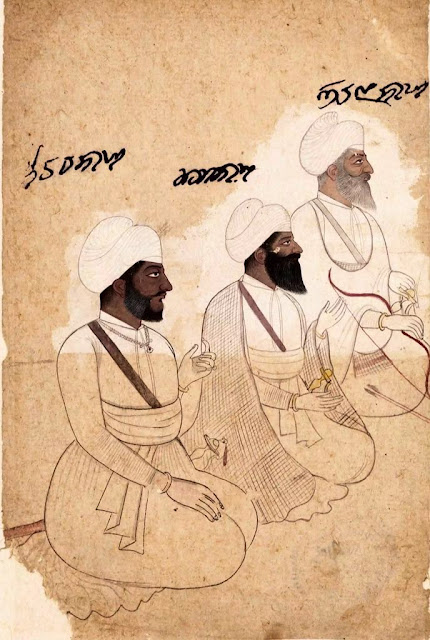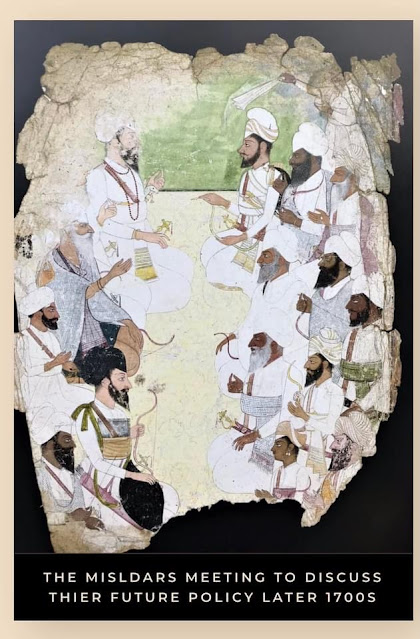Bhangi Misl conquers Ferozepur in 1761 and loses it to the British in 1835.
Sardar Gujjar Singh Bhangi conquered the Ferozepur and surrounding areas in 1761.
A few photos of the ferozepur fort and surrounding cantonment area are at the end of this article.
Ferozepur, it’s fort and surrounding cantonment areas as well as areas around had once belonged to the Bhangi Misl (Kahlon-Dhillon branch if you like, as this was separate to the main Dhillon branch from Sardar Hari Singh Dhillon albeit they were all together like peas in a pod!) … having been conquered by Sardar Gujar Singh Bhangi (under Sardar Hari Singh Bhangi) in 1761 and assigned to his nephew Gurbaksh Singh who assigned the area to his middle son Dhanna Singh…upon whose death the property went to Dhanna Singh’s widow Rani Lachman Kaur who died issueless leading to the British takeover in 1835 after consent from Maharaja Ranjit Singh …whose dependency this was apparently (British built Ferozepur Cantonment over it).
The British may have built Ferozepur Cantonment on our lands illegally - and this is admitted by themselves!
Here is what happened to the brother of Sardar Gujar Singh Bhangi and his properties according to Dr Hari Ram Gupta :
The brothers name was Nusbaha Singh and his properties were eventually relinquished to the British by Maharaja Ranjit Singh when Rani Lachhman Kaur died in 1835 without a male heir - Rani Lachhman Kaur was a widow of the second son of Nusbaha Singh (brother of Sardar Gujar Singh Bhangi, nephew of Sardar Lehna Singh Kahlon of Lahore).
Note that Sardar Gujar Singh Bhangi had 3 brothers.
After taking it illegally(!), the British built a cantonment there, which I assume is Ferozepur cantonment...we had held both the town of Ferozepur and fort...as well as a lot of surrounding territory.
"
Nusbaha Singh of Ferozepur :
Gujar Singh had a brother Nusbaha Singh.
Gujur Singh lived at Rangarh and Nusbaha Singh at village
Bhuri Asal near Khem Karan 11 kms from Kasur on the road to
Patti. This village became famous as the graveyard of American
Patton tanks in the India-Pakistan war in 1965.
Nusbaha Singh lived the life of a zamindar, though he had once participated in the sack of Kasur under Hari Singh and Jhanda Singh.
Nusbaha Singh was keen to possess lands on both sides of river
Satluj. Gujar Singh agreed to support him. They crossed the river
Satlujl at Husainiwala.
The district of Firozpur formed a part of
the Lakhi Jungle. It had a separate faujdar invested with civil and
military authority by the governor of Lahore. The fort of Firozpur
was in a dilapidated condition. Its faujdar on hearing the news
of the sack of Kasur and of the advance of Sikh forces had fled
away.
Gujar Singh seized the town and the fort. and entrusted it to
his nephew Gurbakhsh Singh, the eldest son of Nusbaha Singh.
The Firozpur parganah then contained thirty-seven villages. Gurbakhsh
Singh did not like to live in the ruined fort. He took up his residence
at Sultankhanwala which had a mud fort in a good condition.
The neighbouring area of Khai, Wan and Bajidpur was occupied.
Gurbakhsh Singh extended his sway over a large part of territory
opposite Firozpur along the western bank of the Satluj.
After some time the district was divided Permanently.
Nusbaha Singh settled down at Singhpura. His eldest son Gwrbakhsh Singh was
given the parganahs of Sataragarh, Bhedian and Muhallim situated to
the north of the Satluj. His second son Dhanna Singh received Firoz-
pur. He was married to Lachhman Kaur, daughter of Rae Singh of
Jagadhri and Buriya on the Jamuna. The third son Gurmukh Singh
got Sahjara north of the Satluj. The youngest Jai Singh retained Khai,
10 kms south-west of Firozpur, Wan and Bajidpur.
Rani Lachhman Kaur died without a male issue in 1835. The place
belonged to Lahore Durbar. It was annexed by the British without
any protest from Ranjiit Singh.
Sir George Campbell, deputy commissioner of Wadni (Moga) district writes:
"It was very doubtful whether we were entitled to it, or whether
It was a Lahore fief; in fact, in the early lists it appears as a depen-
dency of Runjeet Siing. But we were then very keen about the
navigation of the Sutlej and Indus, and Runjeet, willing to oblige,
yielded the point. The place was very handy to us, when we were in
alliance with him, for the: Afghan War, and was made a great depot
for our troops. Afterwards the Sikhs much complained that when
the war was over we made it a strong, permanent cantonment, and
as they thought, a sort of menace to Lahore."
Pictures available online.












Comments
Post a Comment